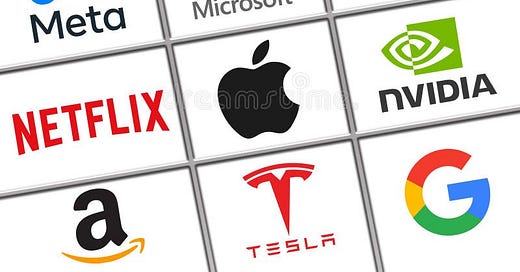Rethinking Consumer Tech: Is Innovation Dead or Just Dormant?
As we usher in a new era of technological advancements, it's hard to ignore the apparent lack of blockbuster consumer tech startups in the last decade (2013-2023). I found myself contemplating this phenomenon, and here are the three hypotheses I've drafted to explain this intriguing trend.
1. The Giant Shadows of Big Tech:
The dominance of major players like Facebook, Amazon, Google, Apple, Netflix, and Spotify in their respective sectors has cast a long shadow over the startup landscape. These tech behemoths not only lead but often swallow potential competitors. New and promising companies either find themselves under the acquisition umbrella of these giants or face fierce competition, leading to an untimely demise. The stories of WhatsApp and Instagram being assimilated into Facebook (now Meta) are prime examples.
2. The missing Breakthrough Technology for Disruption:
Consumer tech thrives on disruption, and the last groundbreaking shift occurred with the advent of consumers starting to move to mobile around 2008-09. Since then, we've been waiting for the next technology revolution. With the giant leap in Generative AI, we see a spark ahead of us. While blockchain shows promise, it is still in its early stages of development, and its impact on consumer-facing applications is yet to be fully realized. For a new startup to succeed, it needs a disruptive technology that creates more value at a lower cost.
3. The Innovation Hub Divide:
The United States stands as the epicentre of the technological macrocosm, commanding a significant portion of the global GDP. With almost a quarter of the world's economic output, the U.S. provides the ideal environment for innovation — a blend of a robust market, abundant talent, and a supportive ecosystem encompassing education, economy, and government backing. Other regions, such as Asia and Africa, though bigger in population, are still grappling with fundamental problems like food and shelter, and their markets are underdeveloped, creating a challenging landscape for tech startups.
What lies in future
Amidst this perceived stagnation, a few standout companies are defying the odds and pushing the boundaries of innovation. OpenAI (2015), Telegram (2013), Canva (2013), and GoTo (2021) are some examples of consumer tech companies that have soared past the $25 billion valuation mark, proving that innovation is still very much alive. Databricks (2013), on the enterprise side, also stands as a testament to the potential for groundbreaking developments beyond the consumer-focused realm.
Despite the seemingly subdued state of the consumer tech industry, it is imperative to recognize that innovation isn't dead but may be dormant. The industry's behemoths may loom large, anticipating the next big disruptor. Still, the triumphs of these resilient startups affirm that the spirit of innovation can flourish even in the face of challenges. The next tech revolution could be just around the corner as we evolve and redefine our digital landscape.




